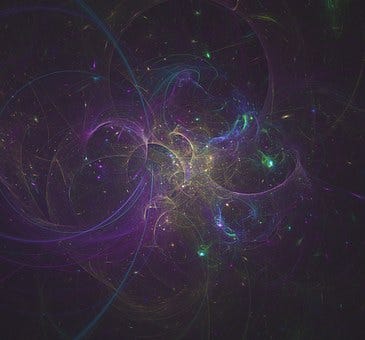
This article is part of a series, and follows on directly from part 1, where I discussed the primary conclusion of quantum physics, that matter as we perceive it is an illusion, actually patterns of organic energy, emerging from who knows where. The second conclusion, related to the first, is that the common perception of separation — that I am different from you, who are different from that car, which is different from that mountain, which is different from that mountain on the moon — is also in some sense an illusion, at least at the material level.
This is how Gary Zukav explains the idea: “The idea that objects exist apart from events is part of the epistemological net with which we snare our particular form of experience. This idea is dear to us because we have accepted it, without question, as the basis of our reality. It profoundly influences how we see ourselves. It is the root of our inescapable sense of separateness from others and environment” (1).
How should we be seeing things, in order to avoid this illusion, to understand the reality? To help us on our way, I’ll repeat one of the quotes from part 1: “The search for the ultimate stuff of the universe ends with the discovery that there isn’t any. If there is any ultimate stuff of the universe, it is pure energy, but subatomic particles are not ‘made of’ energy, they are energy… What we have been calling matter constantly is being created, annihilated, and created again” (2). We therefore have to conclude that, although we are completely oblivious to the process of change, our physical continuity is merely apparent. As Danah Zohar says: “The inanimate matter that we conscious beings are made of keeps changing — in the case of human beings, it changes totally every seven years (her italics)… Our living bodies are in constant, dynamic interchange with other bodies and with the inanimate world around us” (3).
Richard Feynman expresses the same idea more humourously: “So what is this mind? What are these atoms with consciousness? Last week’s potatoes! That is what now can remember what was going on in my mind a year ago — a mind which has long ago been replaced. That is what it means when one discovers how long it takes for the atoms of the brain to be replaced by other atoms, to note that the thing which I call my individuality is only a pattern or dance. The atoms come into my brain, dance a dance, then go out; always new atoms but always doing the same dance, remembering what the dance was yesterday” (4). (Feynman is assuming that memories are stored in the brain, thus adopting a materialist perspective. This is not necessarily true.)
It is an interesting question, for another time, how our experience of a continuing self, our identity, can be maintained, apparently without difficulty or interruption, through such a process.
I’ll discuss the implications of this second illusion, and part 1, in a later article.
Footnotes:
(1) The Dancing Wu Li Masters, Fontana, 1980, p267
(2) ibid., p212
(3) The Quantum Self, Flamingo, 1991, p40
(4) ‘The Value of Science’, in Project Physics Reader 1, Authorized Interim Version (1968–9), p3. Quoted by Fred Alan Wolf, Taking the Quantum Leap, Harper and Row, 1989, p228.